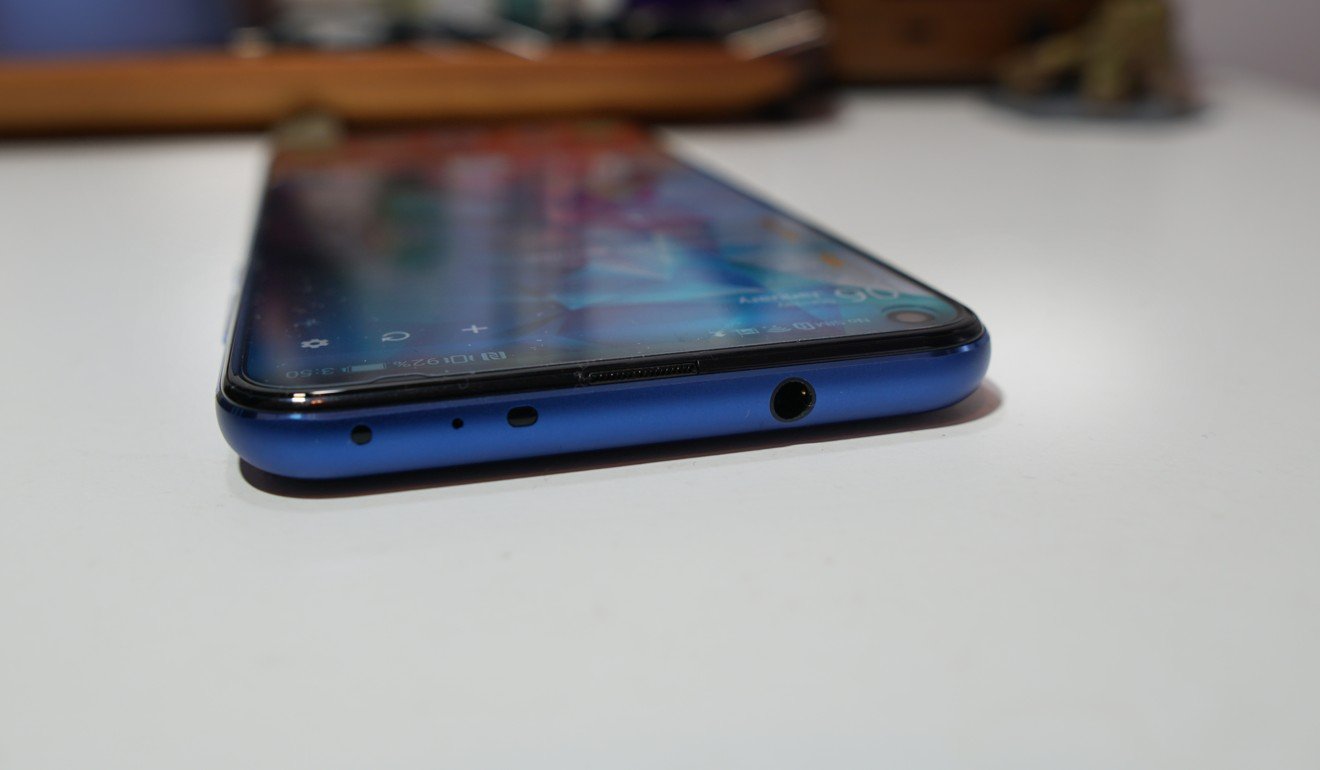
Honor View 20 first look: hole-punch selfie camera replaces notch, and a 48-megapixel main camera
- Huawei sub-brand is first to market with front-facing camera housed in a hole punched in display instead of a notch, a trend likely to stick in 2019
- Its main camera can take ultra-bright 12-megapixel photos or huge-resolution images and, LCD display aside, handset’s specs match flagship phones
This year, the trend appears to be to drill a “hole” into the screen where a selfie camera can be placed.
Best of 2018: an iPhone so good it won over an Android fan
This is a trend that will probably stick because both Huawei and Samsung – the two largest phone brands by handsets sold last year – have committed to it. Samsung recently unveiled a mid-tier handset with the design, and its next flagship, the Galaxy S10, will also have it.
As has been the case lately, China’s Huawei beat the South Korean manufacturer to the punch. Launched under its sub-brand Honor, the View 20 is the first phone to hit the market with this so-called “hole-punch” design.

Inside the View 20’s hole is a 25-megapixel selfie camera; with a diameter of 4.6mm, Honor says its is a “smaller hole” than Samsung is offering. Personally, the notch has never bothered me much, and there’s debate to be had about whether a hole in the corner of the screen looks better than a small, centrally placed notch connected to the top chassis.
However, objectively speaking, the hole does mean less screen space is wasted; the View 20’s 6.4-inch LCD display has a screen-to-body ratio of more than 91 per cent.
Native Honor (and Huawei) apps have been designed to accommodate the hole in the upper left corner, but currently almost all third-party apps other than YouTube do not fill around the hole; instead, they stop underneath it, and the top of the display appears as a black bar (a look known as letterboxing).
This is not a good look, but considering that Samsung’s mainstream Galaxy S phones will be using this design, it’s very likely Android apps will soon adapt.

The hole is not the only aspect of the View 20 proclaimed as a “world’s first”; it is the first handset to adopt Sony’s 48-megapixel CMOS camera sensor.
From my brief testing, the View 20 uses the 48-megapixel in two ways: it can shoot ultra-bright 12-megapixel photos through a process known as “pixel binning”, which combines four pixels’ worth of image data into one; or it can be used to shoot huge 6,000- x 8,000-pixel resolution photos that, because of their size alone, allow for superior zoom and crop capabilities.
In the side-by-side samples below of images shot using a 10X zoom, notice the extra clarity in the View 20’s 48-megapixel image (left) compared to the same shot captured with the Xiaomi Mi Mix 3’s 12-megapixel shooter.

The View 20 has a secondary TOF (time-of-flight) sensor, which is essentially a 3D scanner that can map objects in real time. However, the lens isn’t ready to use currently, as the software isn’t available yet. Given Huawei’s proven image- processing prowess, the combination of a 48-megapixel lens and a 3D scanner should have much potential.
The handset’s other specifications are mostly similar to those Huawei offers on its flagship phones, which is great news for consumers when you consider that the View 20 is priced in the mid-tier range.
Ways mid-range Vivo V11 beats iPhone X, Samsung Note 9
Powering the device is Huawei’s 7nm Kirin 980 processor, with 8GB of RAM, a 4,000 mAh battery, and either 128GB or 256GB of internal storage.
The handset has the usual glass-sandwich design that’s become standard, and the View 20 sports a laser-etched design that reflects a subtle V pattern. Other than the lack of wireless charging and an LCD panel instead of an OLED display, the View 20 can match any brand’s flagship phone for hardware. There’s even a headphone jack.

The View 20 is already on sale in China, with prices starting at 2,999 yuan (US$435), and it will launch in Europe on January 22.

